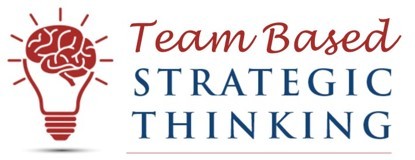Change In Information ≠ Change In Behaviour (#7 Article)
In a world where command and control is no longer the most effective means of driving results, just telling your workers about something and expecting them to act on it doesn’t work. You know that you’ve tried it, however you continue to persevere with knowledge-sharing sessions and expect some magical change in behaviour. Your people not only have to be motivated to adopt the new behaviours, but they need to adopt the new routines that will reinforce the habits that will institutionalise the new behaviours.
We all know that smoking causes cancer, but still people smoke; we all know the effects of eating excessive saturated fats, but still do it. We all make promises to start a new fitness campaign, but we don’t do it. Knowledge in and of itself does not provide the motivation to change or the ability to sustain the new behaviours. You cannot learn how to run the Sydney Marathon by studying about the cardiopulmonary system in a textbook just as much as a race car driver can learn to drive faster by understanding the technical engineering details of his motor vehicle.
Pfeffer and Sutton (2000 Harvard) referred to this as the Knowing/Doing Gap.
Let’s assume for a second that your new business plan is well constructed and logically organised. If your people are to enact it, they will need to know about it. You do all the “town halls” and the internal comms team has fantastic PowerPoint presentations with well-scripted messages and infographics for managers and team leaders to cascade through the organisations. No one can say they don’t know about it! But three months after its inception, the status quo remains, and whilst charts will report that progress is being made, the organisations has devoured the new strategy.
In order for the organisation to embrace the new strategy or plan, there needs to be at the minimum an alignment of mindsets and in some circumstances a complete change in mental models to be able to successfully execute the new plan.
The missing ingredients are experience and learning loop feedback that challenges the underlying assumptions and orthodoxies. Pfeffer and Sutton offer us some guidelines for action to try and bridge this gap:
- Why before How: Philosophy is important.
Simon Sinek has popularised this concept of recent times and added to the body of thought. He defines the “Why” quite well in his famous TED talk where he introduces “The Golden Circle”. He describes how great leaders inspire everyone to take action. He says inspired leaders think, act, and communicate by first starting with Why rather than How or What.
- Knowing comes from doing and teaching others how.
Knowing by doing develops a deeper and more profound level of knowledge and virtually by definition eliminates the knowing-doing gap.
- Action counts more than elegant plans and concepts.
This is has been embedded in the design thinking methodology as rapid prototyping. Jim Collins and Morten Hansen in Great by Choice (Harper Collins 2011) refer to it as the concept of firing bullets first, cannonballs second.
- There is no doing without mistakes.
What is the company’s response? Forgive failure. It does not help to meet failure with anger.
- Fear fosters knowing-doing gaps, so drive out fear.
Organisations that are successful in turning knowledge into action are frequently characterised by leaders who inspire respect, affection, or admiration, but not fear.
- Beware of false analogies: Fight the competition, not each other.
Collaboration and cooperation over competition. The idea the stress of internal competition is necessary for high levels of performance confuses motivation with competition.
- Measure what matters and what can help turn knowledge into action.
The foundation of any successfully run business is a strategy everyone understands coupled with a few key measures that are routinely tracked.
- What leaders do, how they spend their time and how they allocate resources, matters.
Leaders create environments, reinforce norms, and help set expectations through what they do, through their actions and not just their words.

